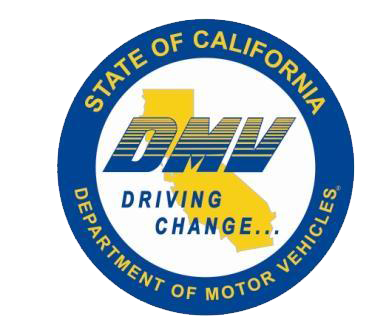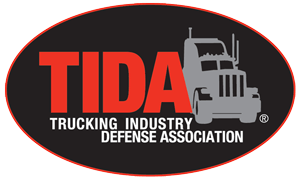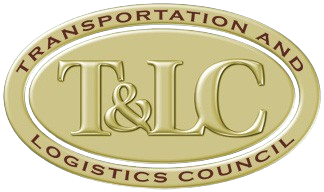AB5: 7 Possible Strategies for Trucking
California’s AB5 law restricting the use of independent contractors has some fatal flaws.
It assumes independent contractors want to be employees, and it assumes somehow all ICs will magically convert to employees. Everyone forgets that we’re already about 80,000 drivers short… have we already forgotten the port and rail congestion from the past year?”
Assembly Bill 5 was passed in the fall of 2019, but a preliminary injunction prevented it from being enforced while the California Trucking Association challenged it in court. After the U.S. Supreme Court refused to hear its appeal in June, that injunction was officially lifted in August.
AB5 set up a stringent ABC test that companies must pass in order to show that their independent contractors are not employees, certifying that:
- A That the worker is free from the control and direction of the hiring entity in connection with the performance of the work, both under the contract for the performance of the work and in fact;
- B That the worker performs work that is outside the usual course of the hiring entity’s business; and
- C That the worker is customarily engaged in an independently established trade, occupation, or business of the same nature as the work performed.
Why is the ABC test so bad? Greg Feary explained, “First, it assumes employee status unless an employer can establish all three, and it puts the burden on the hiring entity. And it has a very restricted version of the B prong.”
In other states that have an ABC test, the B prong states that the worker must perform work outside the usual course of the hiring entity’s business OR outside the usual place of the hiring entity’s business.
And that’s a much more difficult task. Your driver is in the same business of transportation so you fail the B prong.
The C prong is also stricter under California law than in other states. Not only do they have to have an independently established business … the worker has to have taken steps to show they are an independent business.
We’re not saying company driver model is not appropriate but AB5 and the democratically controlled State of California is putting the thumb on the scale to drive owner-operators and small fleet companies out of business.
Do you remember how the owner-operators protesting AB5 shut down the Port of Oakland and the California legislature is simply tone deaf.
Red State vs. Blue State
I don’t care what anybody says politics plays a hand beyond what the law and the facts say.
Keep this in mind the independent contractor status is a mixed question of fact and law. You cannot understand how the law will be applied unless you really understand the facts. But it’s also mixed questions of law and politics. When you think about this whole issue… you have to look at it through the lens of the paternalism of blue states or red state entrepreneurship.
If you get nothing else from this article today, think about your recruiting efforts, because that’s where this issue starts. I talk to a lot of carriers on a daily basis, and one of the first things I ask is, ‘Tell me where all your contractors reside and I can give you a pretty good snapshot. If you have more in blue states, you’re probably going to have more costs in defending the [independent contractor] model.”
That doesn’t mean you’ll lose, but it does mean you’ll likely have more legal costs.
The problem is where the motor carrier itself is headquartered theoretically shouldn’t matter, because it’s a relationship between the motor carrier and the worker, but in real life, it will matter. Don’t go into a court and expect the judge to ignore the fact that you’re a California-based carrier.
The Calm Before the Storm
At the moment there doesn’t seem to be a lot of enforcement of AB5, but that’s likely to change.
The NTA has about ten attorney firms across the United States that keep us informed. So far they haven’t seen any aggressive enforcement, but it’s just a matter of time. It’s kind of the calm before the storm.
If you’re a large, high-profile motor carrier, look out — one way of enforcing the law is prosecuting big motor carriers. Win or lose, high-profile cases will be a deterrent to other fleets for using owner-operators.
The other strategy is going after small carriers that aren’t doing it right, referring to th Pacific 9 “expose’” in December 2017 highlighting abuse of the independent contractor model among truckers at the Southern California ports. That article, which likely helped lead to the passage of AB5, highlighted the “bad apples.” They find three or four bad actors and turn the article into, ‘This is what the entire trucking industry is.’”
What Can I Do About AB5?
Although the California Trucking Association has said it will go back to court to challenge the law, that will be an uphill battle,
A legislative fix is also unlikely for one reason, the California legislature is out of session until next year. Second, although many associations, interest groups and legislators asked the governor, can we pause this, can we come to the table with labor and negotiate a compromise, the appeal just fell on deaf ears, with the governor’s office telling the industry it’s had plenty of time to prepare for this and shouldn’t get a reprieve now.
Further, Prop 22, a referendum passed in 2020 with 59% of votes that exempted app-based drivers from AB5 — ironically, the very group that the law was going after in the first place. Trucking can't be considered under it because it is narrowly written to apply to certain app-based rideshare and delivery drivers.
There are a number of potential solutions that have been suggested for motor carriers to take, and some of the pros and cons of each. However, that is too early in the game to know for sure that they will work.
A lot of these solutions that are being developed in the context of very dynamic California law. But we don’t know if any of these solutions will work. Logically they should work, but…do I think a California judge is going to adopt the logic of a red-state Indiana Supreme Court?”
1. Strategic Dispatch
For a company that uses owner-operators that live all over the country, a fleet may be able to strategically dispatch drivers so that their work is done in other states more than in California.
California’s AB5 is a work law. The work connection is critical. Whether they live in California should not be all that important, but there’s a thumb on the scale, and it could make a difference.
Recent case decisions have held that the amount of time an owner-operator spends in the state of California compared to the amount of time in another state will determine which state has a more compelling interest to exercise its jurisdiction. In other words, if a driver spends 11% of his or her time in California and 19% in Utah, Utah should have the more compelling interest in exercising its laws.
Obviously, this strategy is easier for large companies that have owner-operators who spend a lot of time in other states rather than delivering and picking up California. And it’s going to be a better option for a carrier whose base of operations is outside of the state.
2. California Compensation Addendum
This a partial fix. You make yourself an unattractive target to plaintiffs’ attorneys. Pay your independent contractors in a way that complies with California wage and hour laws, such as assessorial pay for non-driving activities, additional pay for rest breaks, expense reimbursement compensation, and minimizing chargebacks/deductions.
However, there are still regulatory requirements that might need to be separately addressed.
3. Try to Qualify for the B2B Exemption
AB5 does have a business-to-business exemption, but there are still a lot of uncertainties about how it will play out in real life.
In order to qualify for the B2B exemption, a company must show it can meet a list of 13 factors, which include familiar provisions of battles in the “employee misclassification” battle. Some, such as requiring a formal written document defining the relationship, shouldn’t be a problem. But others set a high hurdle, such as:
- The business service provider is providing services directly to the contracting business rather than to customers of the contracting business.
- The business service provider actually contracts with other businesses to provide the same or similar services and maintains a clientele without restrictions from the hiring entity.
- The business service provider advertises and holds itself out to the public as available to provide the same or similar services.
- The business service provider can set its own hours and location of work.
Also the B2B exemption still calls for carriers to pass a different method of determining worker status, called Borello, a multi-factor test with many similar hurdles.
4. Contracting with Motor Carriers who Employ Drivers
The idea of a motor carrier contracting with regional contractors that in turn hire employee drivers is an interesting thought that’s regained traction. However, now you have a less sophisticated entity trying to make sure all the California labor laws are followed.”
And if those aren’t followed, if your contractor decides he’s going to declare that his workers are also independent contractors, you as the contracting entity could also be liable under joint employment laws. In California, AB 1701, which went in effect into 2018, makes general contractors liable for their subcontractors’ employees’ wages and benefits if the subcontractor fails to pay.
Under California law, an entity can be held liable under the joint employer theory if it “directly or indirectly, or through an agent or any other person, employs or exercises control” over their wages, hours, or working conditions.
5. Settlement Carrier/Broker Model
Under this model, you become a broker in California rather than a motor carrier. Then you contract with motor carriers — former independent contractors that get their own authority.
However, fleets can’t order their owner-operators to do that; you can’t control their business decisions and have them be owner-operators.
If you pursue this model, you must tell them that on a certain date in the future, the change is going to happen and that if ICs are interested in becoming a motor carrier and contracting to the new broker entity, you’ll be happy to discuss it. You can also suggest that they go to their applicable state association or some national association such as the NorthAmerican Transportation Association for assistance.
Why is this a solution of sorts? We know in the ABC test, the big problem is the B prong. Logic would indicate that a broker and a motor carrier are not in the same business. And there is law going back decades defining what brokers and motor carriers are, and they are very different. But this still has to be decided by a judge in California, and their reasoning may be different.
Needless to say, that in both cases where you’re depending on former leased owner-operators to get their own operating authority, the cost of insurance for those new motor carriers is going to be a lot higher than ICs operating under the contracting fleet’s authority.
6. The Two- Check System
AB 5 is the foremost topic in the trucking industry. How should owner operator truck drivers be compensated in the future? One approach being widely considered is the “Two-Check System”. There are several variations of this approach. The more common is to employ the driver and then cut a separate check to the driver for use of the driver’s vehicle and other driver expenses.
There are serious issues and risk with the “Two- Check System”. The IRS generally considers that all payments to an employee are subject to payroll tax unless a specific exemption applies. IRC 62 does allow a deduction for reimbursement of an employee’s business expenses including the use of an employee’s vehicle. However, such expenses are only deductible by the employer where the employer maintains an “accountable plan” setting forth a qualifying expense allowance arrangement with the employee.
As part of the plan, the employee must be required to specifically itemize and substantiate all vehicle and other expenses to be paid by separate check. If the IRS requirements are not met, an audit on all employer deductions will be reclassified as income payments. The employer will be assessed payroll taxes on 100% of the reimbursements going back for years, along with interest and penalties.
7. Convert Your Owner-Operators to Company Drivers
Just turning your owner-operator drivers into employee drivers isn't as easy as it sounds. Assuming the independent contractor wants to be an employee, “the big problem this one is, what do you do with the truck?
Some advocate what’s called a “two-check” system, where you hire the driver as an employee but write a separate check to rent his truck.
The IRS likely would question that and say that in order for that truck to be truly leased by the company, the driver can’t take the truck with him when he leaves, and the company can put other drivers in it than the truck owner.
There are serious issues and risk with the “Two- Check System”. The IRS generally considers that all payments to an employee are subject to payroll tax unless a specific exemption applies. IRC 62 does allow a deduction for reimbursement of an employee’s business expenses including the use of an employee’s vehicle. However, such expenses are only deductible by the employer where the employer maintains an “accountable plan” setting forth a qualifying expense allowance arrangement with the employee. As part of the plan, the employee must be required to specifically itemize and substantiate all vehicle and other expenses to be paid by separate check. If the IRS requirements are not met, an audit on all employer deductions will be reclassified as income payments. The employer will be assessed payroll taxes on 100% of the reimbursements going back for years, along with interest and penalties.
“There are ways around that, and the IRS has been unpredictable on this subject. In the Southwest, they tend to be OK with the two-check system, but not in some other states.
So you need to do your due diligence on this.
What About Mixed Fleets and AB5?
If you use both company drivers and owner-operators, that also can be something that counts against you when trying to prove the latter are independent contractors.
If you don’t have any employees in this position and never have, Feary explained, you can use the IRS Section 530 safe harbor defense. Under this rule, there are three statutory requirements that must be met for an IC not to be classified as an employee.
- A. Reporting Consistency – The taxpayer must have timely filed the requisite information returns consistent with its treatment of the worker as a non-employee. (For example, if the taxpayer claims the worker is an independent contractor, Forms 1099 must have been filed for the taxable years at issue). If no information return requirement exists, relief will not be denied on the basis that the return was not filed. (For example, if the taxpayer claims the worker was a volunteer, no information returns would be required). (Rev. Proc. 85-18, 3.03(B); Rev. Rul. 81-224)
- B. Substantive Consistency – If the taxpayer or predecessor treated the worker, or any worker holding a substantially similar position, as an employee at any time after December 31, 1977, the taxpayer will not be eligible for relief. See: Section 530(e)(6); Rev. Proc. 85-18; Rev. Rul. 83-16, Rev. Rul. 84-161. This is a facts and circumstance determination. A review of the day-to-day services performed and comparison of the job functions must be done. The mere fact of similar job titles or categories alone are not sufficient.
- C. Reasonable Basis – The taxpayer must have reasonably relied on one of the following three “safe harbors”: 1) prior audit; 2) judicial precedent; or 3) industry practice. Taxpayer must have relied on the alleged authority at the time the employment decisions were being made for the periods at issue. The statute does not allow ex post facto justification.
The taxpayer may demonstrate other reasonable basis. This requirement is to be liberally construed in favor of the taxpayer.
However, if you have or had employee drivers, you can’t unwind that. Instead, you may be able to differentiate what an employee driver does and what an independent contractor driver does. For instance, he said, perhaps your employees provide white-glove service, wear uniforms, and so forth, while ICs only can handle basic loads where it’s just getting the cargo from point A to point B.
Content Disclaimer: Due to the constantly changing nature of government regulations, it is impossible to guarantee the total and absolute accuracy of the material contained herein or presented. NorthAmerican Transportation Association (NTA) cannot and does not assume any responsibility for omissions, errors, misprinting or ambiguity contained. NTA shall not be held liable in any degree for any loss, damage or injury caused by any such omission, error, misprinting or ambiguity present. It is made available with the understanding that NTA is not engaged in rendering legal, accounting or other professional service. If legal advice or other expert service is required, the services of such a professional should be sought.











